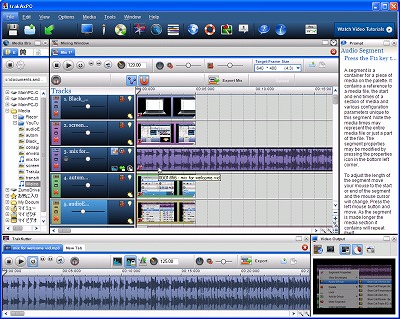

When I read the script, I make sure that I speak more slowly (with pauses) when describing menus and sub-menus (as in “go to File > Export > Export audio”) since I’ll need to match my mouse movements with the audio later on. I use a USB mic (a Blue Snowball) with a MacBookPro and my “recording studio” is my children’s bedroom which is located at the back of the house.
#IMPORT TRAKAXPC FREE#
I choose to record my voice-over in the free program Audacity, because I find there’s more flexibility in editing the audio track there than in the screencasting program itself. I like to stick to videos that are 5 minutes or less in length, so I make sure that the script is no longer than 1-2 pages long. I write out my script in full, word for word, including any shortcuts I’m going to mention.
#IMPORT TRAKAXPC SOFTWARE#
At this stage I might run through the steps on the software program that is the subject of the tutorial, taking note of the necessary sequence of events. The first thing I do is decide the main aim of my video tutorial, and think about how best to explain that concept. The off-the-cuff style needs less explanation: think about what you’re going to explain, practise it a couple of times and record what you’re doing on the screen, talking it about it as you go. My own style choice is the first one: scripted and edited as tightly as possible so that’s what I’ll be discussing in this post. off-the-cuff, casual screencasts which contain some “ums and ahs” and fewer effects.planned, organised, succinct screencasts which require a decent investment of time (a couple of hours or more).When I talk about style here, I’m referring to choosing between the following: The first thing is to choose which style of screencast you’d like to make. Before starting: choose your screencasting style
#IMPORT TRAKAXPC HOW TO#
The information here will relate to the general approach I use, and sequential steps taken to create screencasts, rather than specifics about how to use a screencasting program. I thought it might be useful to put this information in a blog post in case there are educators out there who would like to have a go at screencasting, but don’t know where to start. I also receive regular questions about how I go about making them and which software program/s I use. Whilst I would not consider myself an expert, I do receive some lovely compliments about the clarity and style of the videos I make. I’ve been creating “how-to” style video tutorials (“screencasts”) about music software programs for a number of months now.


 0 kommentar(er)
0 kommentar(er)
